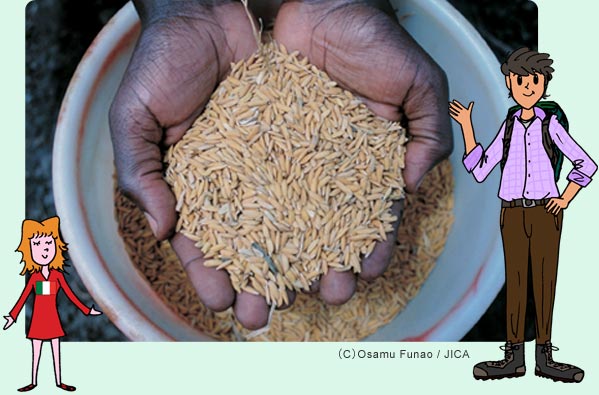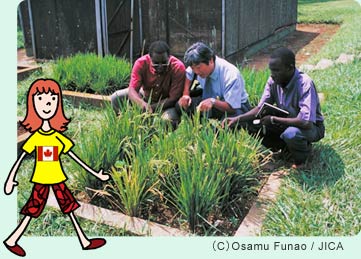
More and more farmers in Africa are beginning to take interest in a special type of rice called New Rice for Africa (NERICA). NERICA was created by crossbreeding native African rice, which is highly resistant to drought, disease, and pests, with Asian varieties of rice, which have a much higher yield. The result of this combination was a new strain that possesses the strong points of both.

"Miracle Rice" with Help from Japan
The West Africa Rice Development Association began developing this new rice in 1991, with cooperation from the Japanese government, agricultural research institutes in Asia, South America, Europe, and the United States, and others. Although the project encountered some technical difficulties along the way, the efforts of the researchers paid off with the birth of NERICA in 1994.
Japan continues to provide financial assistance for research on NERICA through the Consultative Group on International Agricultural Research and promote its dissemination in cooperation with the United Nations Development Programme. Japan also sends technical experts to Africa through the Japan International Cooperation Agency (JICA).
Since NERICA is resistant to pests and weeds, much less effort is required to maintain crops of this rice. And because it does well in very dry climates, it can be grown on the African savannah, where there is little water. Furthermore, it can be harvested more than one month earlier than other types of African rice. Less fertilizer, higher yields, and more protein are among NERICA's unique characteristics; this explains why some people call it "miracle rice."

Hope for Africa
Low agricultural productivity and serious food shortages resulting from population increases mean that many Africans live in hunger and poverty. Because NERICA rice increases farmers' incomes and reduces the need for imported rice, people are hoping that it will make a major contribution to improving this situation.
In June 2004 Japan began sending experts on NERICA dissemination to Uganda, and these specialists are helping to spread the rice in Africa. As a result, NERICA is being grown on more and more land in Uganda, Guinea, and the Ivory Coast, and farmers in neighboring countries are also starting to grow it.










